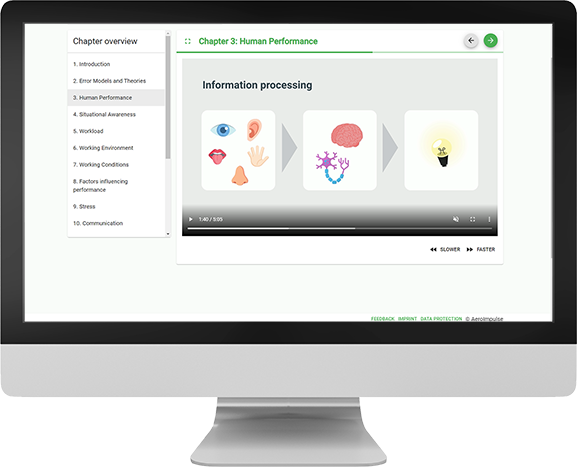Basics – Human Factors and Patient Safety
Patient safety has come under increased public focus in recent years as citizens have developed an increasing sensitivity to dealing with medical errors and incidents.
The image of a hospital can suffer lasting damage over a period of years as a result of a single event that attracts media attention. One example of this is the numerous organ donation or bacteria scandals at major top hospitals in recent years.
Safety in the provision of medical services, is thus increasingly becoming a competitive factor. Hospitals are therefore increasingly confronted with the challenge of aligning their organizational structures with these developments. In this context, it seems only a matter of time before safety is firmly anchored as a corporate goal throughout the hospital sector. In order to be able to operate successfully on the market long term under these conditions, early and targeted alignment to the new market requirements is necessary. The key questions that arise are:
- What are our safety goals?
- How safe is our hospital today?
- How do we achieve operational safety?
- How can we reach our employees?
- How do we create a safety culture?
- How do we measure progress in safety?
Do you know our Human Factors E-Learning for Medicine?
With our 3.5 hour e-learning you will learn the basics of Human Factors / CRM – Available on all devices
Patient safety and economics –
Two sides of the same coin
If one systematically addresses these questions and the answers to patient safety, process improvements are always identified and initiated (distribution of tasks, responsibilities, communication). These lead to improved process efficiency. As a result, this means: More and better work in the same time. Safety and economy are therefore not a contradiction, but two sides of the same coin! After all, efforts to improve medical safety will also serve the steady cost-cutting efforts in the medium and long term. From an economic perspective, a systematic safety orientation of the organization and personnel contributes to minimizing work errors caused by improper work performance. This reduces both error and error correction costs.
It is becoming clear that medical practice will continue to require a high level of expertise in the future – but no longer exclusively. For substantial improvements in patient safety and also for the reduction of costs, the interpersonal skills and the process orientation of medical staff must also become a stronger focus of staff qualification.

In addition to efficiency and costs, patient safety is also one of the top issues of this decade.
It doesn’t always have to be the really big tragedies, like our example about the KLM crash of a 747 on Tenerife on this page. Fortunately, very dramatic events are rare, even in medicine. They are the visible tip of the iceberg of Human Errors. Most of the time, misconduct by doctors, nurses and emergency medical technicians in the rescue service fortunately ends far more unspectacularly and takes place in everyday operational life beyond the public eye. These minor errors are familiar to all of us: an incorrect entry in a patient record, the delayed administration of a medication, overlooking a finding or forgetting to report an examination. These kinds of errors cost money. In addition, they can compromise patient safety and personal as well as institutional reputation. This is all the more annoying because most incidents are easily preventable.
In order to prevent this from happening, knowledge of the Human Factors is required.
Human Factors Trainings and Crisis Resource Management (CRM) as a solution
Not every hospital or ambulance service has structured qualification systems with transparent training or staff development paths. In general, many elements of a holistic qualification in health care are only weakly spread, especially in the area of procedural and interpersonal competence.
This is where CRM-Trainings (Crisis Resource Management) / Human Factors Trainings help. They help to control those circumstances and conditions that negatively influence people in their actions alone or in a team. The Human Factors include character abilities and limitations, such as perceptiveness, stress resistance, adaptability, teamwork skills, or dominance behavior. In addition, the social environment also has a considerable influence on the Human Factors. Teamwork and the challenges associated with communication play a key role here. Human Factors training creates an awareness of their influence in everyday business.
Since human factors training or CRM (Crisis Resource Management) training has not yet been widely and systematically disseminated, the fruits are still hanging low. Therefore, a high base effect is expected. Those who are consistent will quickly see results. Our E-Learning forms an important start here for teaching the basics.
Further helpful Human Factors information!
Are you looking for basic information on Human Factors, Human Error / Dirty Dozen as well as causes of Human Factors accidents? Further helpful knowledge:
- Human Factors – Understanding and mastering human factors. Learn more!
- Human Factors – Causes of Human Error. Learn more!
Parts of this text are from Hinsch et al. (2016) „Erfolgsfaktoren Effizienz und Sicherheit – Was die Medizin von der Luftfahrt lernen kann“.
Do you already know our medical Human Factors E-Learning?
- 3.5 hours (Initial), also modular as Refresher
- video-animated training with final test + certificate
- Available on all devices
